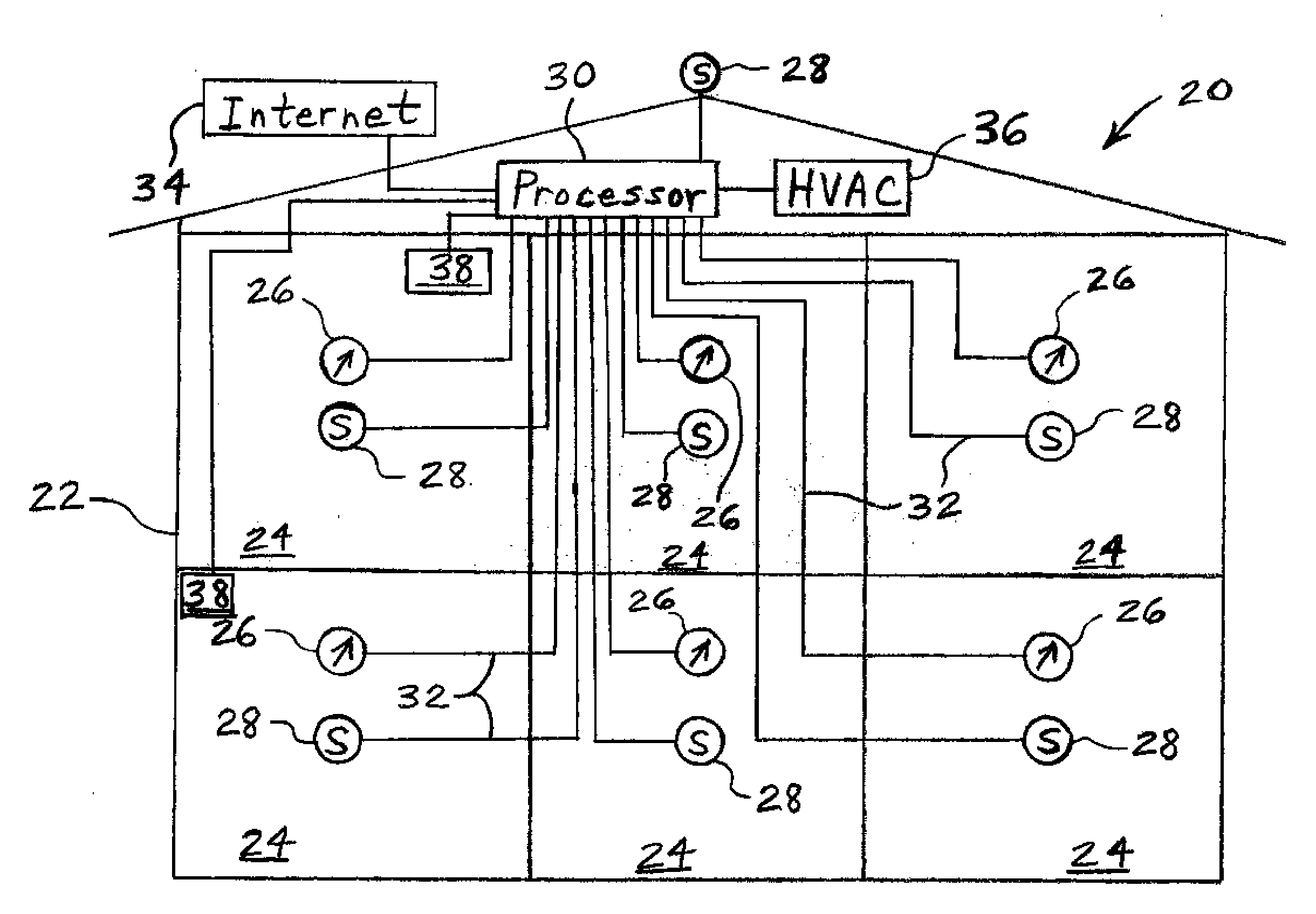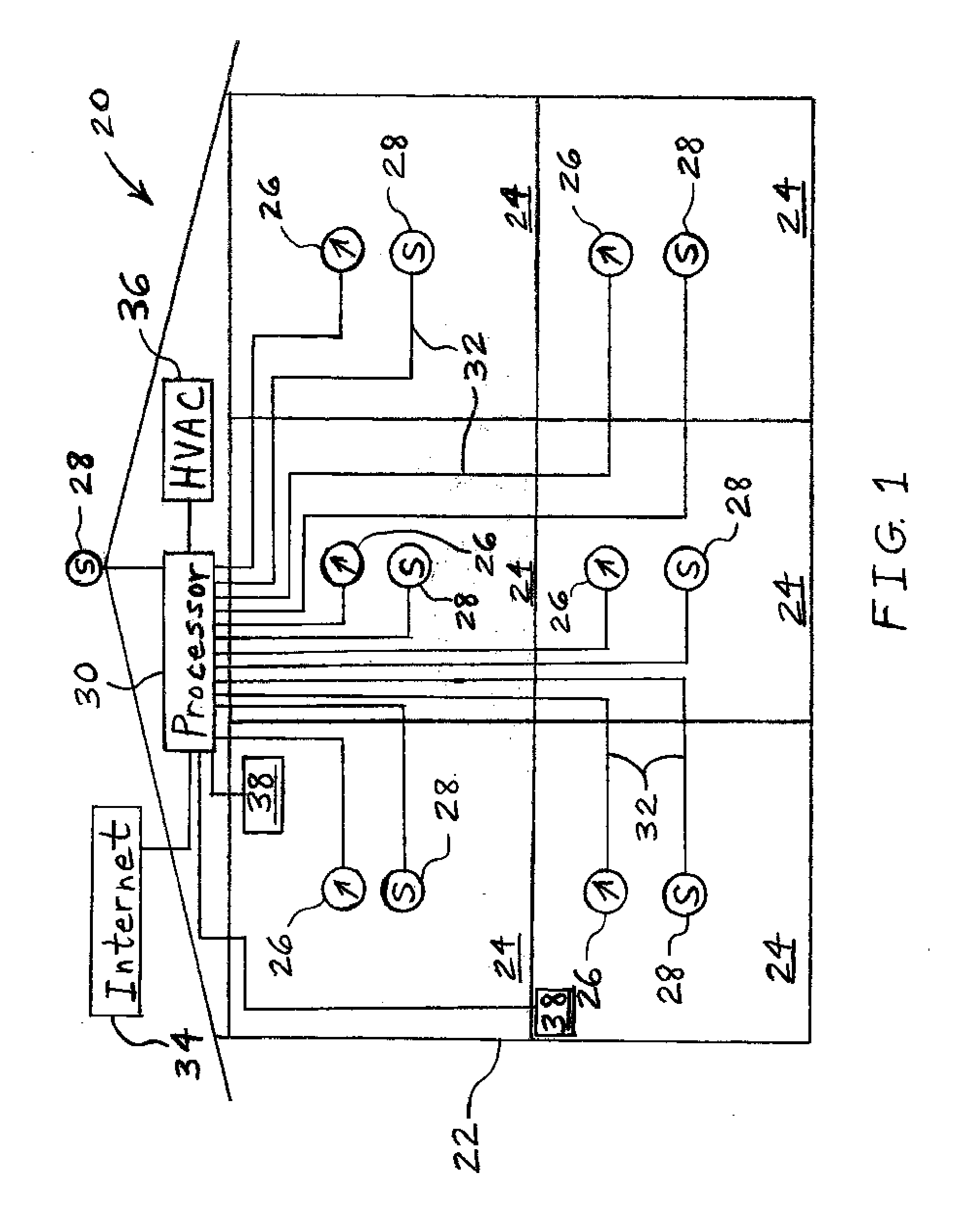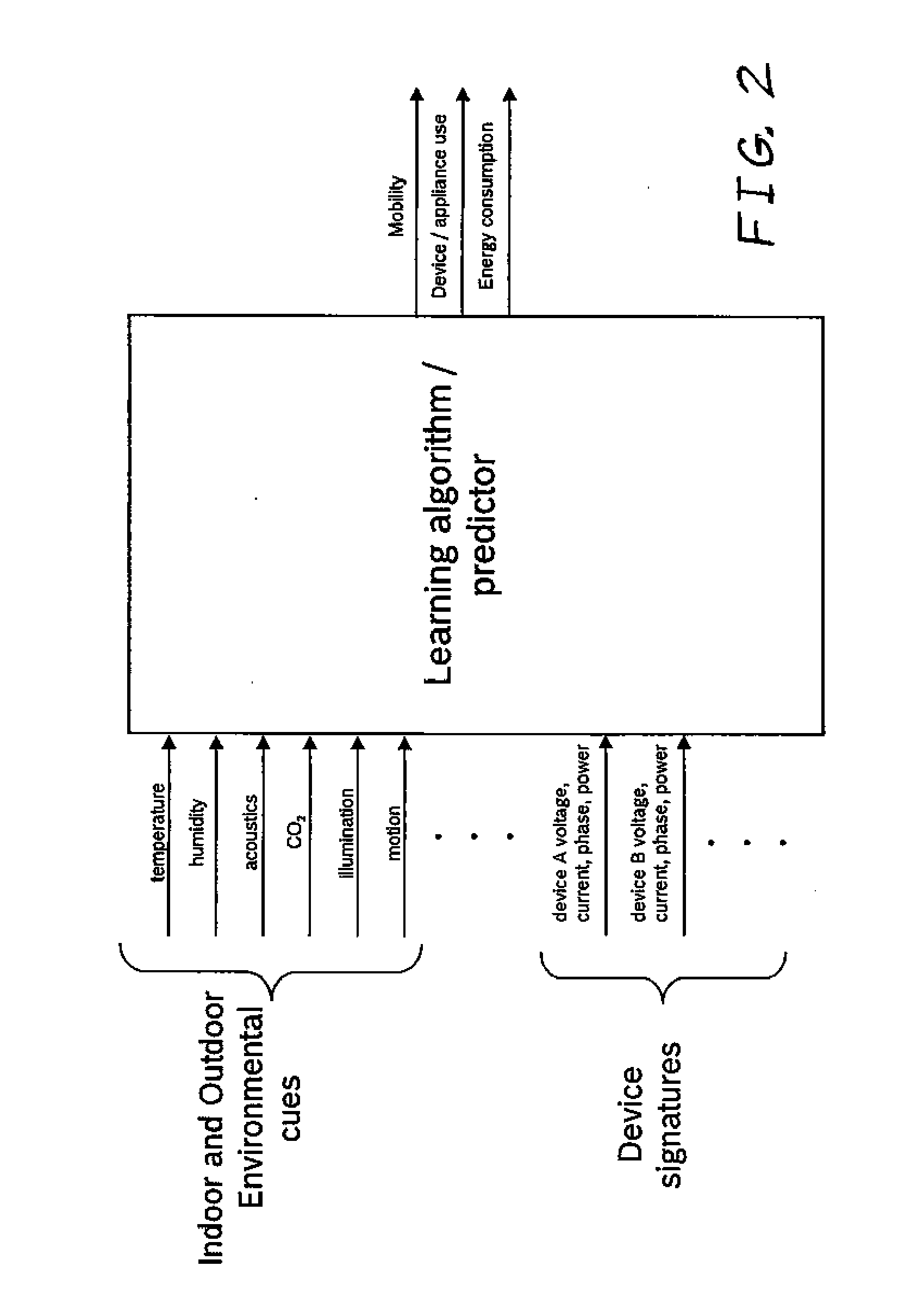Sensor-Based Occupancy and Behavior Prediction Method for Intelligently Controlling Energy Consumption Within a Building
a technology of occupancy and behavior prediction, applied in the direction of program control, heating types, instruments, etc., can solve the problems of sacrificing comfort level, re-programming is considered too difficult of a task, and the time period during which a building will be occupied is not always well known, so as to achieve the effect of reducing energy costs and sacrificing comfort level
- Summary
- Abstract
- Description
- Claims
- Application Information
AI Technical Summary
Benefits of technology
Problems solved by technology
Method used
Image
Examples
Embodiment Construction
[0026]Some portions of the following description are presented in terms of algorithms and operations data. Unless otherwise stated herein, or apparent from the description, terms such as “calculating”, “collecting”, “controlling”, “determining”, “predicting”, “processing” or “computing”, or similar terms, refer the actions of a computing device that may perform these actions automatically, i.e., without human intervention, after being programmed to do so.
[0027]The embodiments hereinafter disclosed are not intended to be exhaustive or limit the invention to the precise forms disclosed in the following description. Rather the embodiments are chosen and described so that others skilled in the art may utilize its teachings.
[0028]Referring now to FIG. 1, there is shown one embodiment of a sensor-based HVAC control system 20 of the present invention including a building 22 having a plurality of rooms 24. Within each room 24, there may be one or more energy consumption sensing device 26 an...
PUM
 Login to View More
Login to View More Abstract
Description
Claims
Application Information
 Login to View More
Login to View More - R&D
- Intellectual Property
- Life Sciences
- Materials
- Tech Scout
- Unparalleled Data Quality
- Higher Quality Content
- 60% Fewer Hallucinations
Browse by: Latest US Patents, China's latest patents, Technical Efficacy Thesaurus, Application Domain, Technology Topic, Popular Technical Reports.
© 2025 PatSnap. All rights reserved.Legal|Privacy policy|Modern Slavery Act Transparency Statement|Sitemap|About US| Contact US: help@patsnap.com



